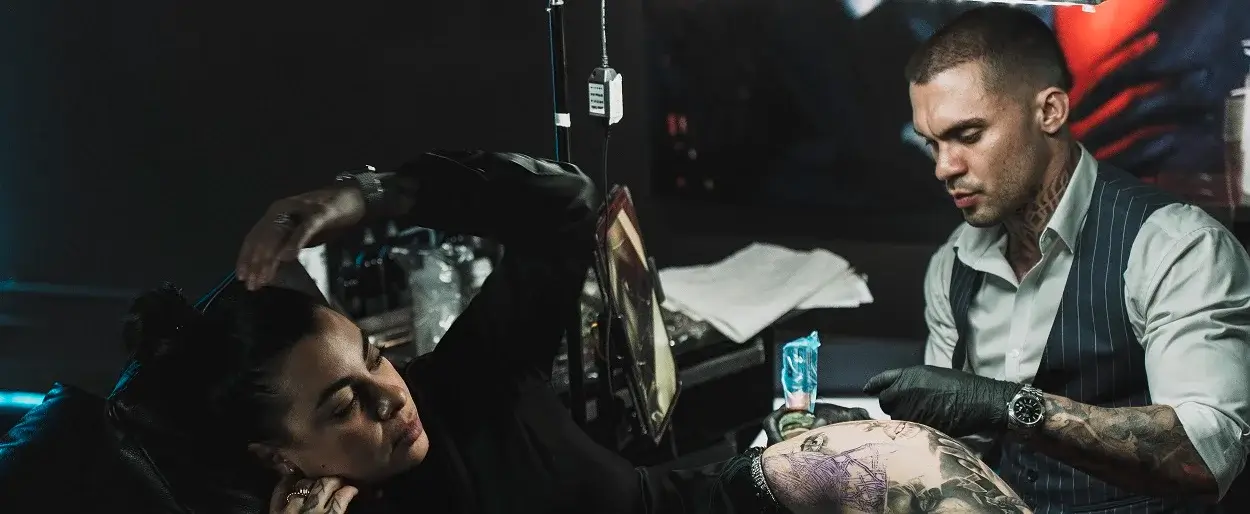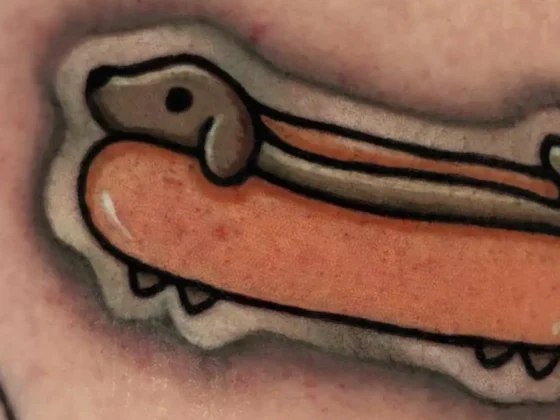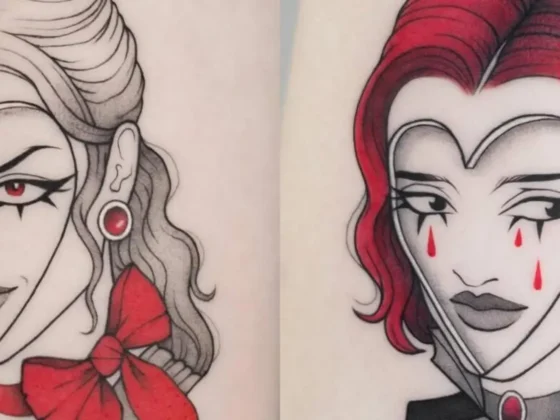Inked Mag Staff
December 21st, 2018
Blue/Black or White/Gold Dress Controversy is Back! What Colors Are These Skulls?
These skulls look purple and orange, but are they both the same color?!
“The Dress” controversy had the internet furious. Half of the social media population was very sure it was a blue and black dress, while the other side’s (rightfully) confidence defended the dress being white and gold. Neither were right.
Here comes round two of a similar optical illusion test. Is the left skull purple and the right one orange? Seems to be an easily closed case…

However, when you isolate the stripes that make up the skulls, you’ll find neither skull has purple bones. In fact, all of the bones are the same color. Take a step back to include the stripes, and they shift to purple and orange.
The pigments morph because of the Munker-White illusion, which “shifts the perception of two identical color tones when they’re placed against different surrounding hues.”
The illusion most likely results from what David Novick, a computer scientist at the University of Texas at El Paso, calls the “color-completion effect.”
“The phenomenon causes an image to skew toward the color of the objects that surround it.” In a black-and-white image, a gray element would appear lighter when it’s striped with white, and darker when with black.
Many neuroscientists think that our brain does this, because of the neural signals in charge of relaying information about the pigments. When that information about the pigments in our visual field get mixed together, our neural signals create a color somewhere in the middle.
Here, the left skull is striped with blue in the foreground, and the other with yellow stripes. When the original skulls take on the characteristics of the separate surroundings, they look like different colors entirely.
Editor's Picks
Bridging Classical Art and Modern Tattooing
Esteban Rodriguez brings the discipline of classical fine art to the living canvas of skin, creating hyper-realistic tattoos that merge technical mastery with emotional depth.
Show Your Ink Fashions Brings Custom Style to Tattoo Culture
Show Your Ink Fashions creates custom shirts designed to showcase your tattoos as wearable art, blending fashion with personal expression.
The Ultimate “Superman” Tattoo Roundup: Just in Time for Superman’s Return to Screens
With Superman’s big return to theaters, fans are revisiting some of the most iconic ink inspired by the Man of Steel.














